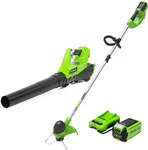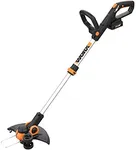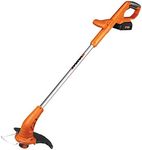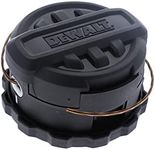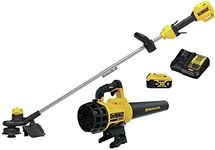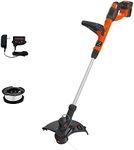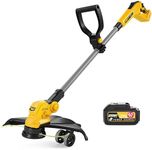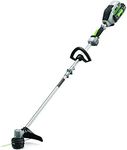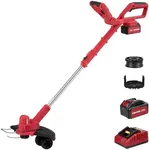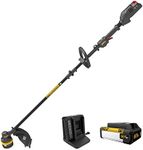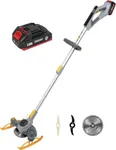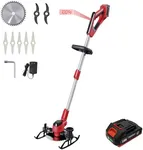Buying Guide for the Best Weed Eaters
Choosing the right weed eater, also known as a string trimmer, can make a significant difference in maintaining your lawn and garden. The right model will help you trim grass and weeds efficiently, making your yard look neat and well-kept. When selecting a weed eater, consider the size of your yard, the type of vegetation you need to trim, and your physical comfort while using the tool. Here are some key specifications to consider when choosing a weed eater and how to navigate them to find the best fit for your needs.Power SourceWeed eaters can be powered by gas, electricity, or batteries. Gas-powered models are typically more powerful and suitable for large yards or heavy-duty tasks, but they are also heavier and noisier. Electric models, which can be corded or cordless, are lighter and quieter. Corded electric weed eaters offer unlimited run time but require an extension cord, making them best for smaller yards. Battery-powered models provide more mobility and are quieter, but their run time is limited by battery life. Choose a power source based on the size of your yard and the type of vegetation you need to trim.
Cutting WidthThe cutting width of a weed eater refers to the diameter of the area it can trim in one pass. A larger cutting width means you can cover more ground quickly, which is ideal for larger yards. Common cutting widths range from 10 to 18 inches. For small to medium-sized yards, a cutting width of 10 to 14 inches is usually sufficient. For larger yards, consider a cutting width of 15 inches or more to reduce the time spent trimming.
WeightThe weight of a weed eater affects how easy it is to handle and maneuver. Lighter models are easier to carry and use for extended periods, making them suitable for smaller yards or users who may not have a lot of upper body strength. Heavier models, often gas-powered, may offer more power but can be tiring to use. Consider your physical strength and the duration of your trimming tasks when choosing the weight of your weed eater.
Shaft TypeWeed eaters come with either a straight or curved shaft. Straight shaft models are generally more versatile and can reach under bushes and into tight spaces more easily. They are also better suited for taller users. Curved shaft models are typically lighter and easier to handle, making them a good choice for shorter users or those who prefer a more balanced feel. Choose a shaft type based on your height and the specific areas you need to trim.
Line Feed SystemThe line feed system determines how the trimmer line is advanced during use. There are three main types: bump feed, automatic feed, and fixed line. Bump feed systems require you to tap the trimmer head on the ground to release more line, giving you control over the line length. Automatic feed systems release line as needed without any action from the user, offering convenience. Fixed line systems use pre-cut lengths of line that need to be replaced manually. Choose a line feed system based on your preference for control and convenience.
Noise LevelThe noise level of a weed eater can be an important consideration, especially if you live in a neighborhood with noise restrictions or if you prefer a quieter operation. Gas-powered models are generally the loudest, while electric and battery-powered models are quieter. If noise is a concern, opt for an electric or battery-powered weed eater. Check the decibel rating if available, and choose a model that balances power and noise level according to your needs.
